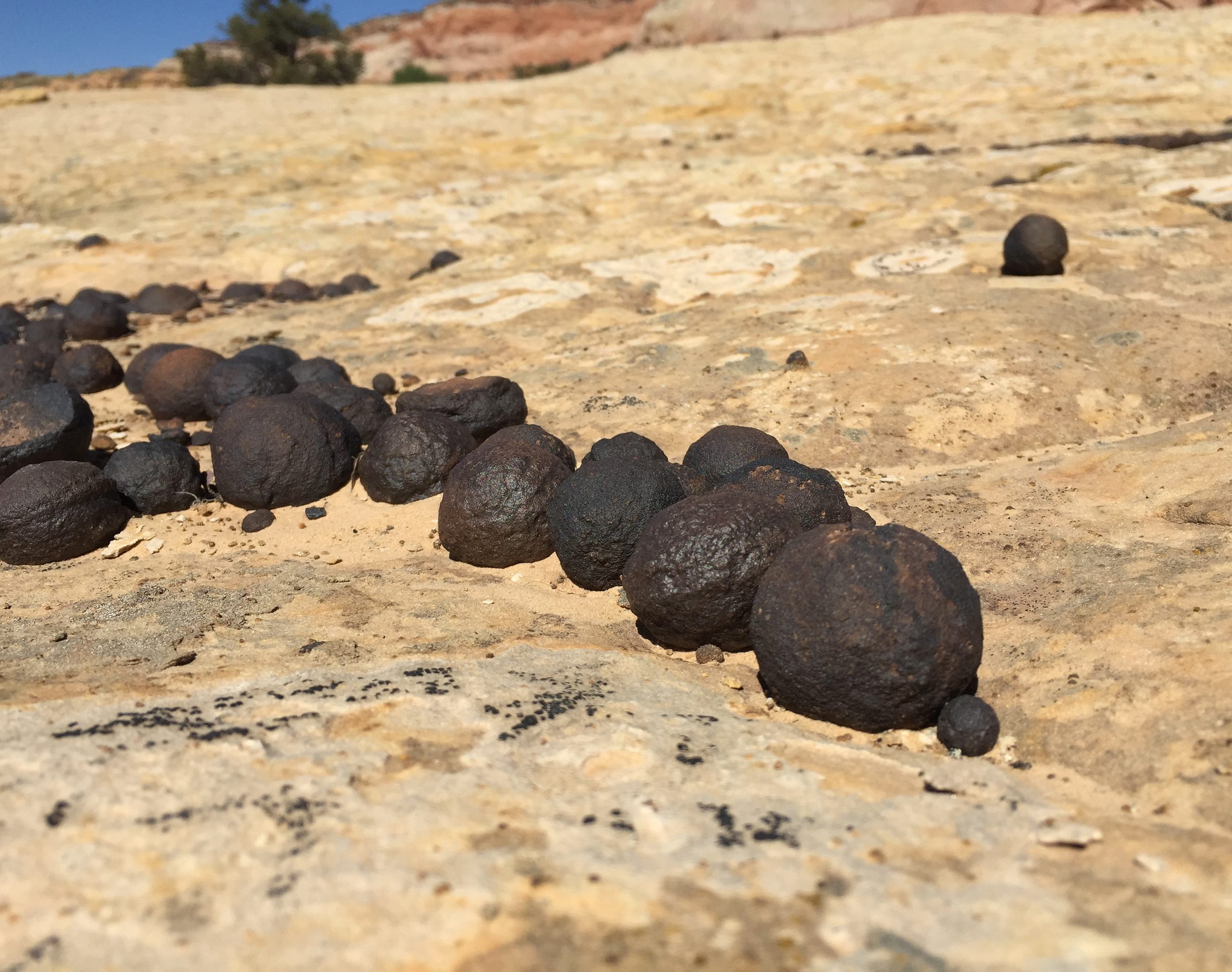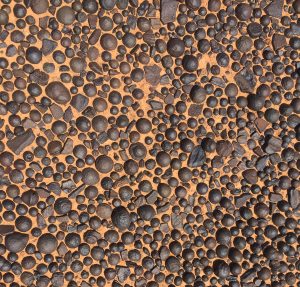
Moqui marbles are small, brownish-black balls comprised of iron oxide and sandstone that formed underground when iron minerals precipitated from flowing groundwater. They occur in many places in southern Utah either embedded in or gathered loosely into “puddles” on the ground near outcrops of Jurassic-age Navajo Sandstone.
Moqui marbles are also known by collectors as Navajo cherries, Navajo berries, Kayenta berries, Entrada berries, Hopi marbles, Moqui balls, or Shaman stones. Geologists call them iron concretions.


Host rock of Moqui marble is Navajo Sandstone and was originally deposited around 180 to 190 million years ago.
The Moqui marbles are similar to Martian Blueberries, discovered on Mars by NASA’s Mars Exploration Rover Opportunity in 2004. Martian blueberries are thought to have formed in a similar manner to the Moqui marbles on earth, therefore providing some of the first evidence for water on Mars’ ancient past.
Learn more in the September 2017 issue of Survey Notes, published by the Utah Geological Survey.
Photos courtesy of Michael Vanden Berg